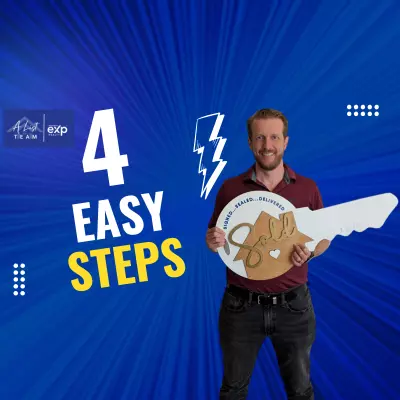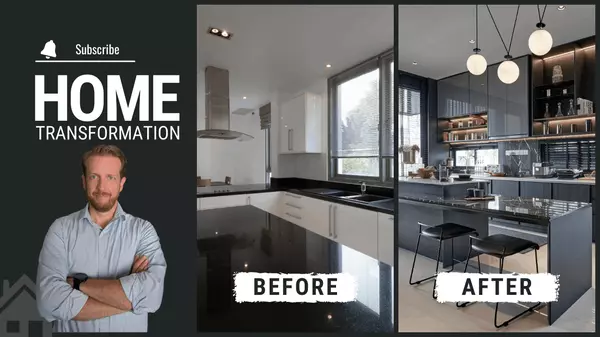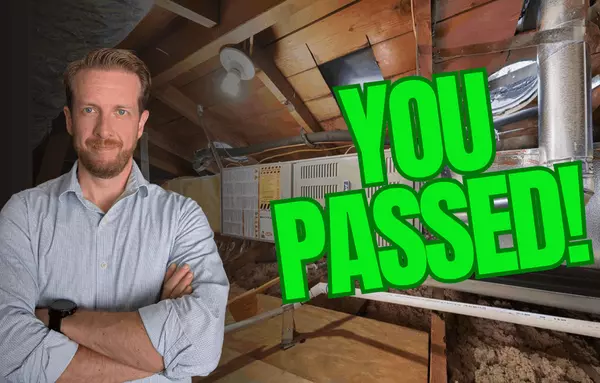Should I Sell Or Wait In This Market? What Not To Do In A Buyer's Market

Should I Sell Or Wait In This Market? What Not To Do In A Buyer's Market
Deciding whether to sell your current home and buy a new one in today's market can feel overwhelming—especially when the market isn't favoring sellers. Many homeowners, particularly in areas like Katy, TX, find themselves stuck between wanting to move into their dream home and concerns about equity or holding onto their low interest rates. This dilemma is something I, Aaron White, a realtor with the A List Team, encounter regularly. In this article, I’ll break down the key considerations you need to weigh before making that move, share real-world examples of clients who navigated this challenge successfully, and provide a simple five-step process to help you decide if now is the right time for you.
Key Takeaways
- Selling and buying in the same market often balances out financially, even if it doesn’t feel like a seller’s market.
- Holding onto a low interest rate doesn’t always translate to financial advantage; monthly payments and loan structure matter more.
- Following a clear, step-by-step process with your realtor and lender can help you make a confident, informed decision about moving.
Understanding the Current Market in Katy, TX and Beyond
It’s mid-2025, and the real estate market in Houston and surrounding areas like Katy, TX, is relatively flat. In some neighborhoods, home prices may have risen 2%, while in others, they’ve dipped 2%. This kind of market can feel uncertain. Homeowners often ask, “Is this the right time to sell and buy?” especially when they’re not seeing the rapid appreciation that characterized previous years.
Two concerns come up most frequently:
1. Equity concerns: "I don’t have enough equity to make the move."
2. Interest rate hesitation: "I have a fantastic 2-3% mortgage rate. Why would I give that up?"
Both worries are valid, but they don’t tell the full story. Let’s dive deeper into each so you can make an informed decision.
Equity: Why It’s Not Always About the Numbers You See
When homeowners say they don’t have enough equity, they often mean they’re worried about not making as much money selling their current home as their neighbors did or as they expected. It’s important to remember that if you’re moving within the same market—say, from one neighborhood in Katy, TX to another—you’ll be selling and buying in roughly the same market conditions.
This means the price challenges you face selling your home will likely be mirrored when you buy your next one. If your home doesn’t sell for as high a price as you hoped, the home you want to buy probably won’t be priced as high either. Essentially, this can balance out so that you’re neither gaining nor losing dramatically in equity.
Another common misconception is focusing too much on the “headline equity number” — like how much your neighbor made selling their house compared to you. While it’s natural to want to maximize your sale price, keep in mind that the equity you “make” on your current home often becomes part of the cost basis of your new one. That means it’s not really profit you get to pocket; it’s reinvested in your next property.
So rather than fixating on who made more or less, the real question is: What will your monthly payment be on the new home? What are the upfront costs? And how do those compare to your current situation?

Understanding Your True Costs
It’s essential to get a clear picture of your net proceeds from selling your home after all closing costs, agent commissions, and fees. Then, compare that to your down payment and monthly mortgage payment on the new property. This approach helps you see the actual financial impact of moving, beyond just equity numbers.

Interest Rates: Why Low Rates Are Not Always the Best Reason to Stay Put
Having a mortgage with a 2 or 3% interest rate is a dream for many homeowners, and understandably, it’s hard to give up that low payment. We all love to brag about our amazing rates by the water cooler. But here’s the reality: interest rates don’t pay you; dollars do.
Let me share two client stories that illustrate why holding onto a low interest rate isn’t always the best financial move.
Client Story 1: Lower Loan Balance, Lower Monthly Payment
A client sold their home with a 2-3% interest rate and bought a more expensive property. You might think their monthly payment would increase significantly, but because they negotiated a lower loan balance on the new home, they were able to eliminate their private mortgage insurance (PMI). Even though their interest rate went up by about 3%, their monthly mortgage payment actually decreased. This is a powerful reminder that your monthly cost is what ultimately matters—not just the interest rate itself.
Client Story 2: Investor Doubling Their Real Estate Portfolio
We helped an investor who owned a $300,000 home with a 3% interest rate. He decided to sell and use the equity to buy two homes worth $300,000 each. His reasoning? He knew appreciation would be the main driver of his wealth over time, and by doubling his property holdings, he was essentially doubling his investment potential. In 5 to 8 years, he expects substantial benefits from this strategy.
These examples show that the decision to move isn’t just about holding onto a low rate but about the bigger financial picture and your long-term goals.

Five Simple, Free Steps to Determine if Selling and Buying Is Right for You
Now that we’ve covered the main concerns about equity and interest rates, here’s a straightforward, five-step process to help you evaluate your situation. These steps are designed to give you clarity, reduce uncertainty, and empower you to make the right decision, whether you’re in Katy, TX, or another market.
Step 1: Get a Comparative Market Analysis (CMA) and a Net Sheet
Start by asking your realtor for a CMA on your current home. This is a detailed analysis of recent sales of comparable properties in your neighborhood and will give you a realistic price range for your home.
Next, request a net sheet from your agent. This document estimates how much money you’ll actually walk away with after paying commissions, title fees, insurance, taxes, and other closing costs. This step helps you understand the true financial outcome of selling your home.
Step 2: Talk to Your Lender and Get Preapproved
Contact your lender to get preapproved for a mortgage on your next home. This will give you a clear picture of the interest rates available to you and your potential loan terms. Knowing these numbers helps you understand what your new monthly payment might be and how much you can afford.

Step 3: Work with Your Realtor to Search for Your Dream Home
Collaborate with your real estate agent to set up a home search tailored to your preferences—whether that’s a big game room, an outdoor grill, or a pool. Looking at specific properties will give you budgetary insight into taxes, insurance, and mortgage payments for homes you actually want.
Ask your realtor and lender to analyze these properties to help you compare them with your current home’s costs and net proceeds. This step is crucial for understanding the financial commitment of your desired move.
Step 4: Decide Whether to Buy First or Sell First
There are pros and cons to both approaches:
- Buy first: Requires more cash upfront but makes moving easier since you’ll have a new home ready before selling your current one.
- Sell first: Gives you certainty about how much money you’ll have to put toward your new home and reduces the need for a large cash reserve upfront.
Discuss these options with your realtor and lender to see which strategy aligns best with your finances and lifestyle.
Step 5: Evaluate the Value of Your Desired Home
Finally, consider the lifestyle benefits the new home offers. Are you getting a pool, closer proximity to schools or work, or features that will genuinely improve your quality of life? If moving means paying less, it’s an easy decision to make. But if it costs more, ask yourself how much more and whether the added benefits justify the extra expense.
Quantifying the value of these lifestyle improvements can help you make a choice that feels right both financially and personally.

Why Partnering with a Trusted Realtor and Real Estate Agent Matters
Making a move in today’s market requires clear, accurate information and expert guidance. That’s where working with a knowledgeable realtor or real estate agent becomes invaluable. With their help, you can:
- Access up-to-date market data specific to your neighborhood in Katy, TX.
- Understand all the costs associated with selling and buying.
- Navigate negotiations to secure the best deal on your new home.
- Coordinate with lenders for preapproval and financing options.
- Receive personalized advice tailored to your financial goals.
The A List Team specializes in helping homeowners like you through this process, providing transparent, accurate numbers and realistic projections so you can move forward confidently.
Conclusion: Making the Right Move for You
Is it the right time to sell your house and buy another? The answer isn’t always straightforward, especially in a buyer’s market like the one we’re experiencing in Houston and Katy, TX, in 2025. It depends on your unique situation, your financial goals, and what you truly want in your next home.
Remember these key points:
- Equity gains or losses often balance out when you’re buying and selling in the same market.
- Low interest rates are great, but your monthly payment and loan structure matter more in the long run.
- Following a clear, step-by-step process with your realtor and lender will give you the clarity to make the best decision.
If you’re considering a move, reach out to the A List Team. We’re here to provide you with a complimentary market analysis, help you understand your financing options, and guide you through finding that dream home with all the features you desire. Our goal is to make this process as smooth and informed as possible so you can feel confident at the closing table.
Contact us today to start your journey toward your next home in Katy, TX.
Categories
Recent Posts










